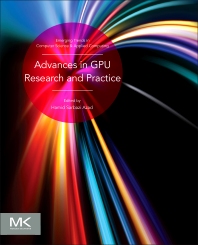Books in Physical sciences and engineering
Books in Physical sciences and engineering
- 1st Edition
- Volume 28
- September 8, 2016
- Gordon Gribble + 1 more
- English
- eBook9 7 8 0 0 8 1 0 0 7 6 1 7

Progress in Heterocyclic Chemistry
- 1st Edition
- September 8, 2016
- Olga V. Boltalina + 1 more
- English
- Paperback9 7 8 0 1 2 8 0 3 4 7 9 8
- eBook9 7 8 0 1 2 8 0 3 5 0 2 3

New Fluorinated Carbons: Fundamentals and Applications
- 1st Edition
- September 8, 2016
- Nihad Ahmad Hassan + 1 more
- English
- Paperback9 7 8 0 1 2 8 0 4 4 4 9 0
- eBook9 7 8 0 1 2 8 0 4 4 9 6 4

Data Hiding Techniques in Windows OS
- 1st Edition
- September 7, 2016
- Jean-Paul Duroudier
- English
- Hardback9 7 8 1 7 8 5 4 8 1 7 9 6
- eBook9 7 8 0 0 8 1 0 1 7 7 4 6

Adsorption-Dryers for Divided Solids
- 1st Edition
- September 7, 2016
- Jean-Paul Duroudier
- English
- Hardback9 7 8 1 7 8 5 4 8 1 7 8 9
- eBook9 7 8 0 0 8 1 0 1 7 8 5 2

Liquid-Liquid and Solid-Liquid Extractors
- 1st Edition
- September 7, 2016
- James G. Speight
- English
- Paperback9 7 8 0 1 2 8 0 3 0 9 7 4
- eBook9 7 8 0 1 2 8 0 3 0 9 8 1

Deep Shale Oil and Gas
- 1st Edition
- September 6, 2016
- W. Burger + 1 more
- J. H. Clough Smith + 1 more
- English
- Hardback9 7 8 0 0 8 0 1 0 3 1 7 4
- Paperback9 7 8 1 4 8 3 1 2 2 8 2 3
- eBook9 7 8 1 4 8 3 1 5 5 2 4 1

Marine Gyro-Compasses and Automatic Pilots
- 1st Edition
- September 6, 2016
- Hamid Sarbazi-Azad
- English
- Paperback9 7 8 0 1 2 8 0 3 7 3 8 6
- eBook9 7 8 0 1 2 8 0 3 7 8 8 1

Advances in GPU Research and Practice
- 1st Edition
- September 3, 2016
- Alan McIntosh + 1 more
- English
- Paperback9 7 8 0 1 2 8 0 1 7 1 2 8
- eBook9 7 8 0 1 2 8 0 1 8 0 8 8

Science and the Global Environment
- 3rd Edition
- September 3, 2016
- Joshua Feldman + 2 more
- English
- Paperback9 7 8 0 1 2 8 1 1 2 4 8 9
- eBook9 7 8 0 1 2 8 1 1 3 7 7 6

Eleventh Hour CISSP®